As one of the main composition elements of hanfu tops and robes, sleeves can have a lot of variation. They mostly fall into a couple categories that we have recovered historical artifacts from, though a lot of manufacturers end up with some variation in their patterns. Today we’ll go over a whole ten sleeve types, a bit of historical context, and some of the variations they can go through.
Before we get into that, though, let’s go over a little basic information that applies to (almost) all hanfu sleeves. One of the defining characteristics of the hanfu is the 接袖/接袖/jie1 xiu4/sleeve connection. What this means is that the sleeve is not connected to the body of the top or robe at the shoulder, but at a point partway down the upper arm, with the body of the clothing and part of the arm being made up of one piece of fabric, and the rest of the sleeve of another. These are stitched together to create the whole sleeve. The rest of the sleeve is also made of one piece of fabric both front and back, folded over the top and stitched together at the bottom. Some exceptions to this are half-sleeves, which sometimes don’t have the second piece of fabric making up the rest of the sleeves since it’s not long enough to necessitate one, and tops and robes with no sleeves, since those just end at the shoulder.
As for the length of hanfu sleeves, this very much varies across dynasties, but the rule of thumb is to size this depending on the occasion the hanfu is meant to worn in. For casual clothing, or 便服/便服/bian4 fu2, the length of the sleeve should exceed the fingertips by one handlength. For formal clothing, or 禮服/礼服/li3 fu2, the length of the sleeve should exceed the fingertips by about the length of your forearm. So to find the cuff-to-cuff measurement of a top or robe, measure your armspam from fingertip to fingertip, then add the length of your hand x2 for casual clothing or the length of your elbow do your fingertip x2 for formal clothing.
Now let’s move on to some of the classic sleeve shapes!
窄袖/窄袖/zhai3 xiu4/Narrow Sleeves
We’ll start with the narrower of sleeves. This one is literally just called narrow sleeve, but a lot of different sleeve shapes can fall into this category. In this case it’s usually used to refer to straight sleeves that don’t exceed the circumference of the arm by much, sometimes sloping up slightly to be narrower at the wrist than the shoulder. Often used in zhongyi and yuanlingpao, this one isn’t that typical of any specific dynasty, but distributed across all the dynasties in different forms of clothing.
飛機袖/飞机袖/fei1 ji1 xiu4/Airplane Sleeves
The name airplane sleeves is obviously something that we came up with recently, but it’s what’s used to refer to this kind of narrow sleeve popular in the Song dynasty with a very clear narrowing from the shoulder to the wrist, named because laid flat, the shape made by the shape of the sleeves represents two airplane wings. Usually used in a second or third layer of a womens’ Song dynasty set with a straight parallel collar, these kinds of sleeves are very easy to recognize and typically run very wide and loose on the arms.
工袋袖/工袋袖/gong1 dai4 xiu4/Gongdai Sleeves
No such clue how to translate gongdaixiu, but these are the last kind of sleeve you could count as a narrow-silhouette sleeve. Slightly curved at the bottom with a narrower shoulder and wrist, these sleeves are relatively looser than the two above, but are still closer to the arm and not overly wide. They’re most often seen in Ming dynasty tops and robes as the narrow counterpart to the pipaxiu or pipa sleeve, remaining from the Yuan time period.
大袖/大袖/da4 xiu4/Wide Sleeves
This is kind of a large category, but daxiu refers to any sleeve with an extremely large straight opening at the cuff. Many Ming dynasty daxiu feature the majority of the sleeve opening being sewed up to the wrist for the sake of warmth, though. We most often see these in daxiushan, the wide sleeved garments usually used as the outer layer of a lot of the most popular hanfu outfits. There’s an exception to this—the wide-sleeved ru in the Northern/Southern dynasties was very popular and an iconic silhouette. Daxiu can curve down gradually until the end of the sleeve flattens out, or have a more angular cut at the bottom of the sleeve, like the subcategory known as guangxiu, or vast sleeves. There are also fangxiu, or square sleeves, that go straight down from the shoulder and take the shape of a square or rectangle with very little curve.
琵琶袖/琵琶袖/pi2 pa2 xiu4/Pipa Sleeves
Every heard of the pipa instrument? Also referred to less commonly as the “Chinese lute,” the pipa is a pear-shaped instrument that’s wide and round at the bottom with a thinner neck at the top. Keeping this in mind, the pipaxiu is a type of sleeve whose shape resembles the pipa, with a slightly narrower shoulder and a sleeve that curves widely around the forearm, then comes back up to close at the wrist. This style of sleeve was especially popular in the Ming dynasty, especially since it doesn’t allow the cold to get into the sleeve, and can be seen in many Ming dynasty tops and robes.
垂胡袖/垂胡袖/chui2 hu2 xiu4/Sagging Sleeves
This is one of the other awkwardly translated ones, but the chuihuxiu, or sagging sleeves, look a bit similar to the gongdaixiu in that the bottom curves down slightly, but the ends are more flat than the gongdaixiu’s ends are. This style was seen in the earlier Qin to Jin dynasties, and is one of the rarer ones that you’ll see made—you’ll probably either see it in Han-dynasty style quju or in Wei/Jin dynasty style ru. These typically also have a thicker straight sleeve cuff, sometimes made of a contrasting color.
直袖/直袖/zhi2 xiu4/Straight Sleeves
This one is pretty self-explanatory—the root of the sleeve at the shoulder is the same all the way down to the cuff of the sleeve. Don’t underestimate the width of straight sleeves, though; sometimes a very wide sleeve root can cause the cuff to be quite wide as well! Unlike the narrow sleeve or zhaixiu, these don’t slowly narrow down to the wrist, so they still end up pretty wide. You can see these pretty much anywhere, especially on general outwear, but they’re most seen in Wei/Jin tops and inner layers of like… every single dynasty.
喇叭袖/喇叭袖/la3 ba1 xiu4/Trumpet Sleeves
Trumpet sleeves are also obviously a modern name, but this is a fairly straightforward sleeve as well: think of it as zhaixiu, but backwards. It’s like zhixiu, except the width of the sleeve widens from root to cuff. How is this different from daxiu, you ask? Well, daxiu has a large curve to it, and typically ends up wide enough that you can hold your arm out and it’d reach the floor. Trumpet sleeves tend to be a little less than that, maybe going down to the waist or hip, and have a straight slope from root to cuff, not curved.
半袖/半袖/ban4 xiu4/Half Sleeves
Less of a shape than a length, but banxiu (or 半臂/半臂/ban4 bi4/half arm, as they may call some varieties) are exactly what they sound like—half-sleeved. They might not have a connecting sleeve piece since they’re so short. Usually they’re either straight or trumpet shaped, and almost always used as an outer layer.
無袖/无袖/wu2 xiu4/No Sleeves
Similar to above—no sleeves is no sleeves! Obviously no connecting piece, the shoulder cuts off right at the root. Mainly Ming dynasty wear.
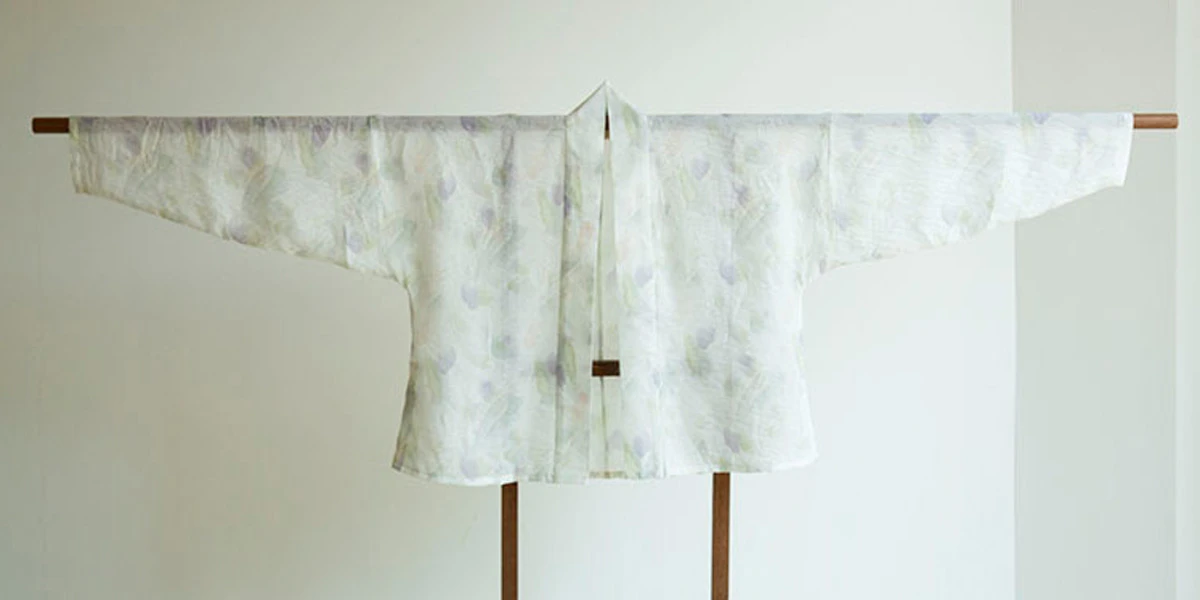
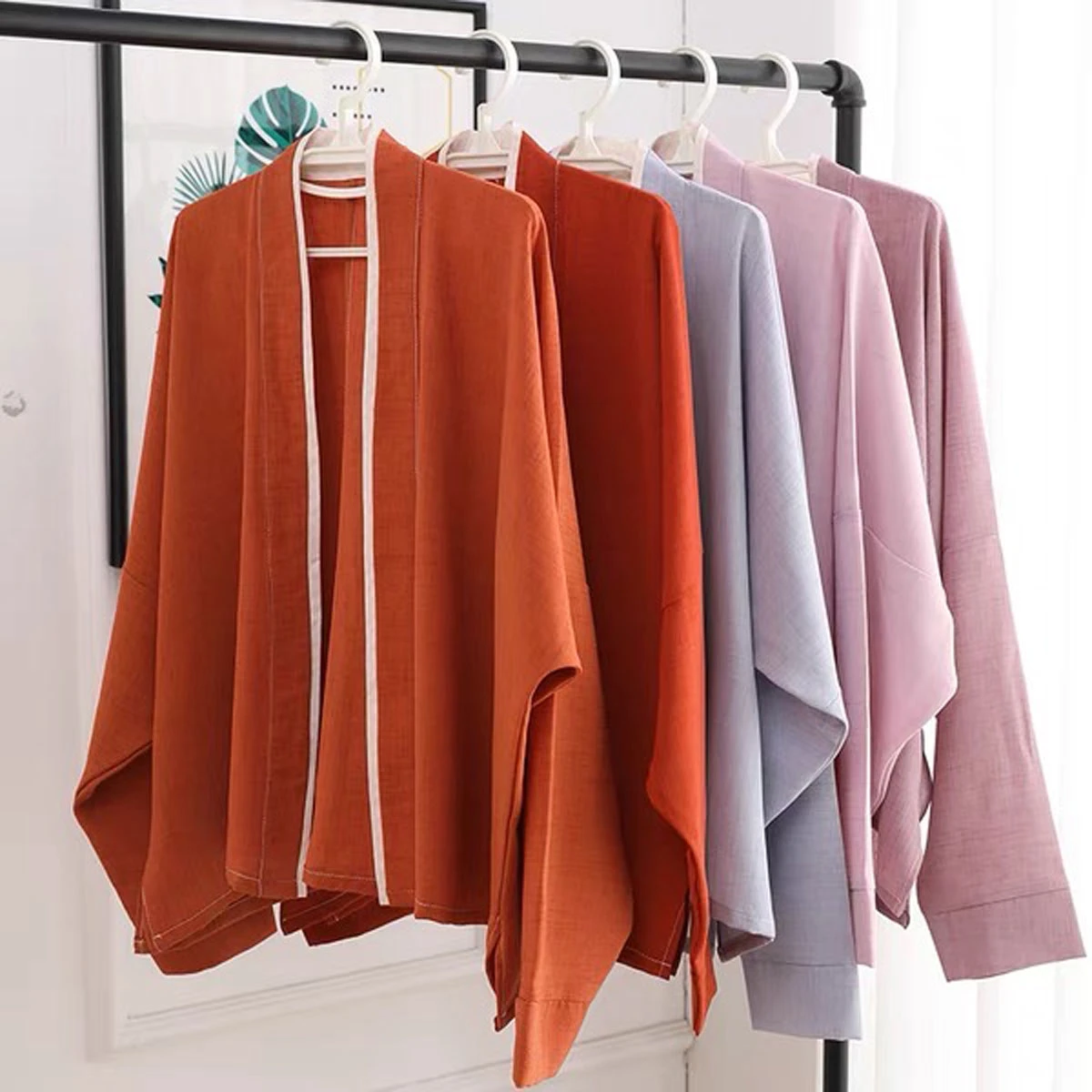
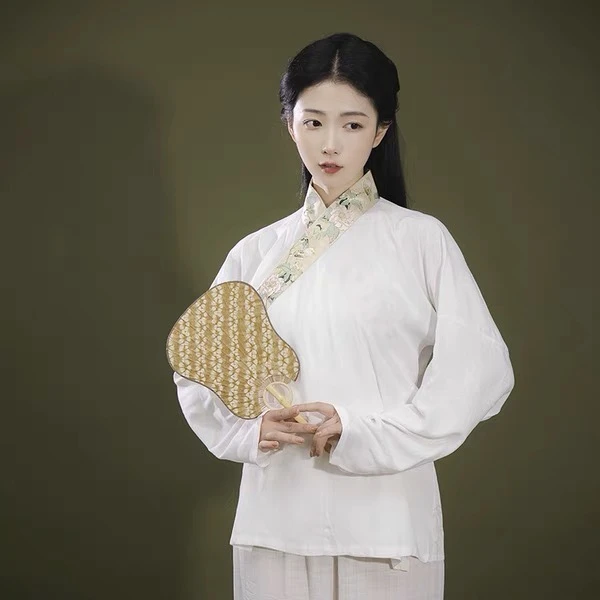
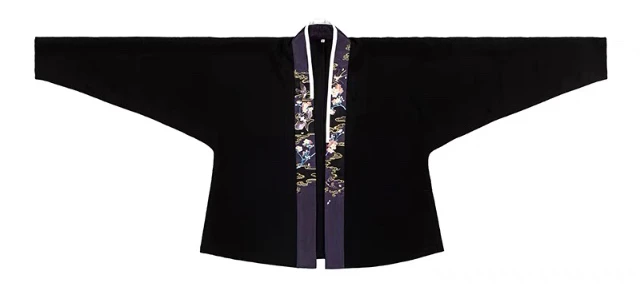
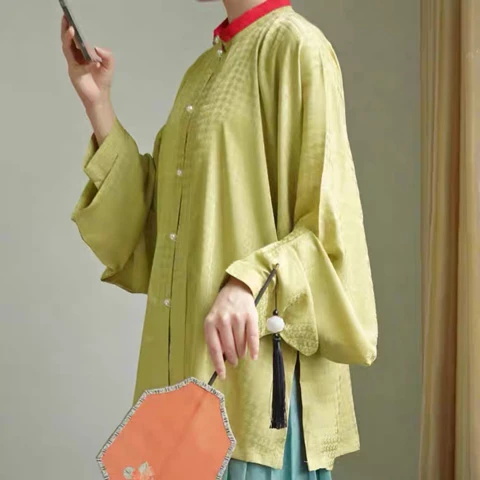
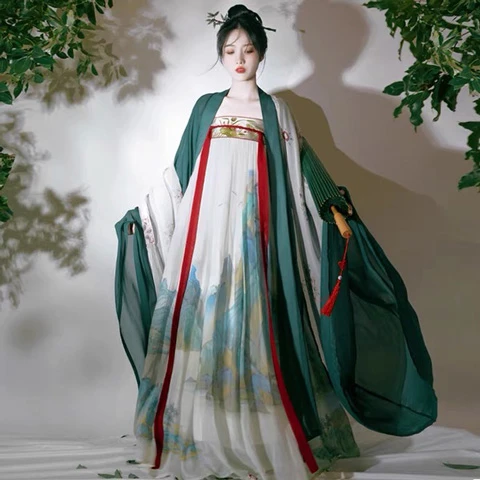
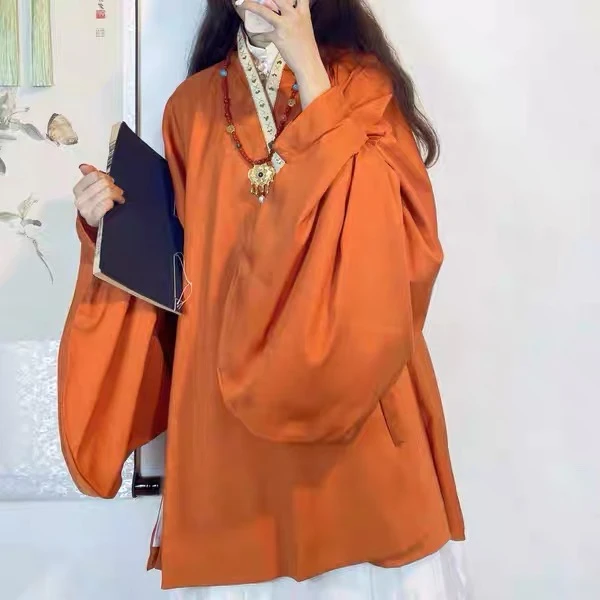
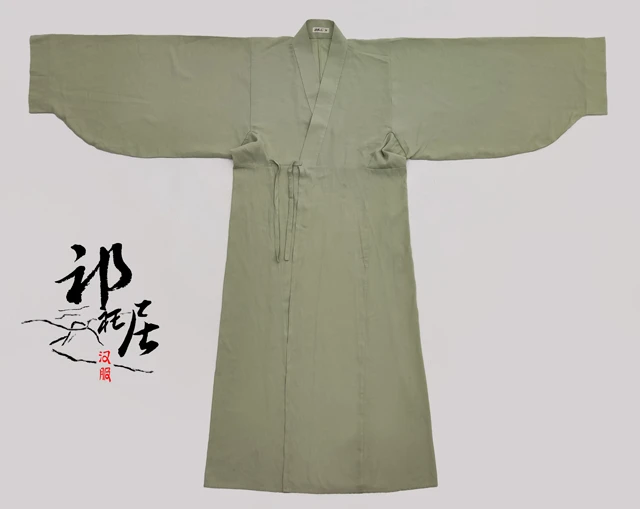
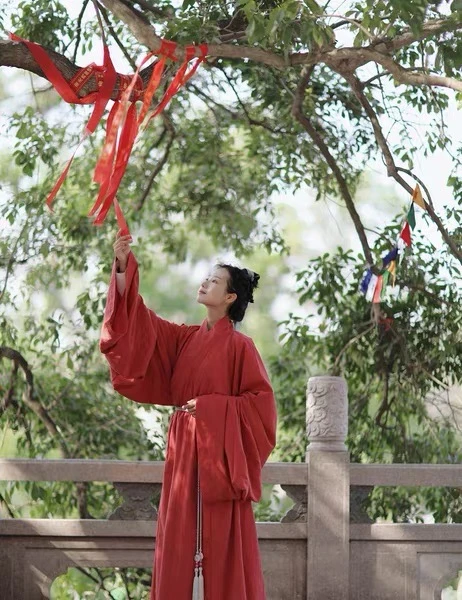
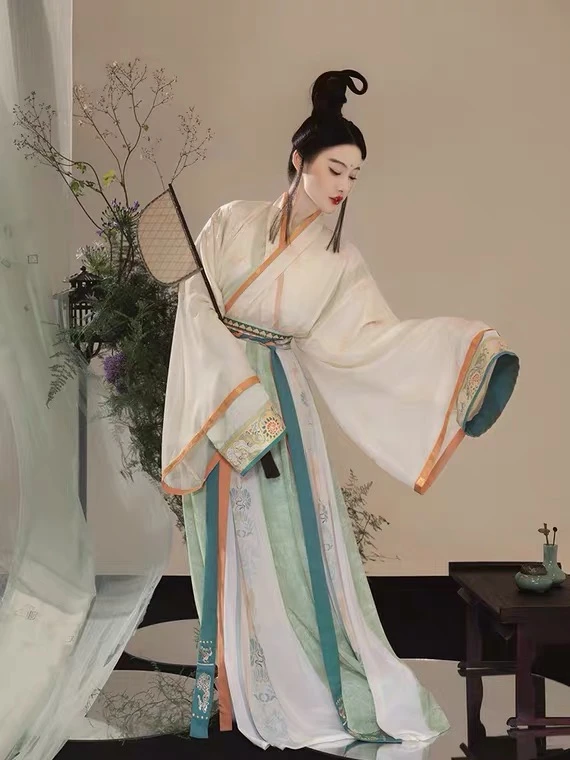
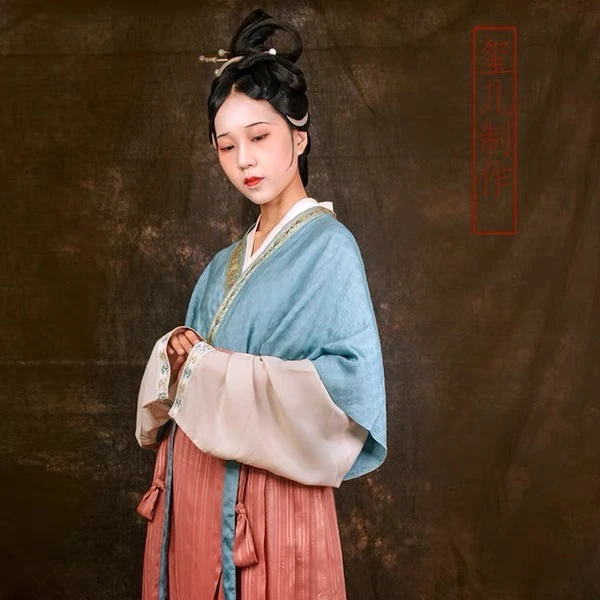
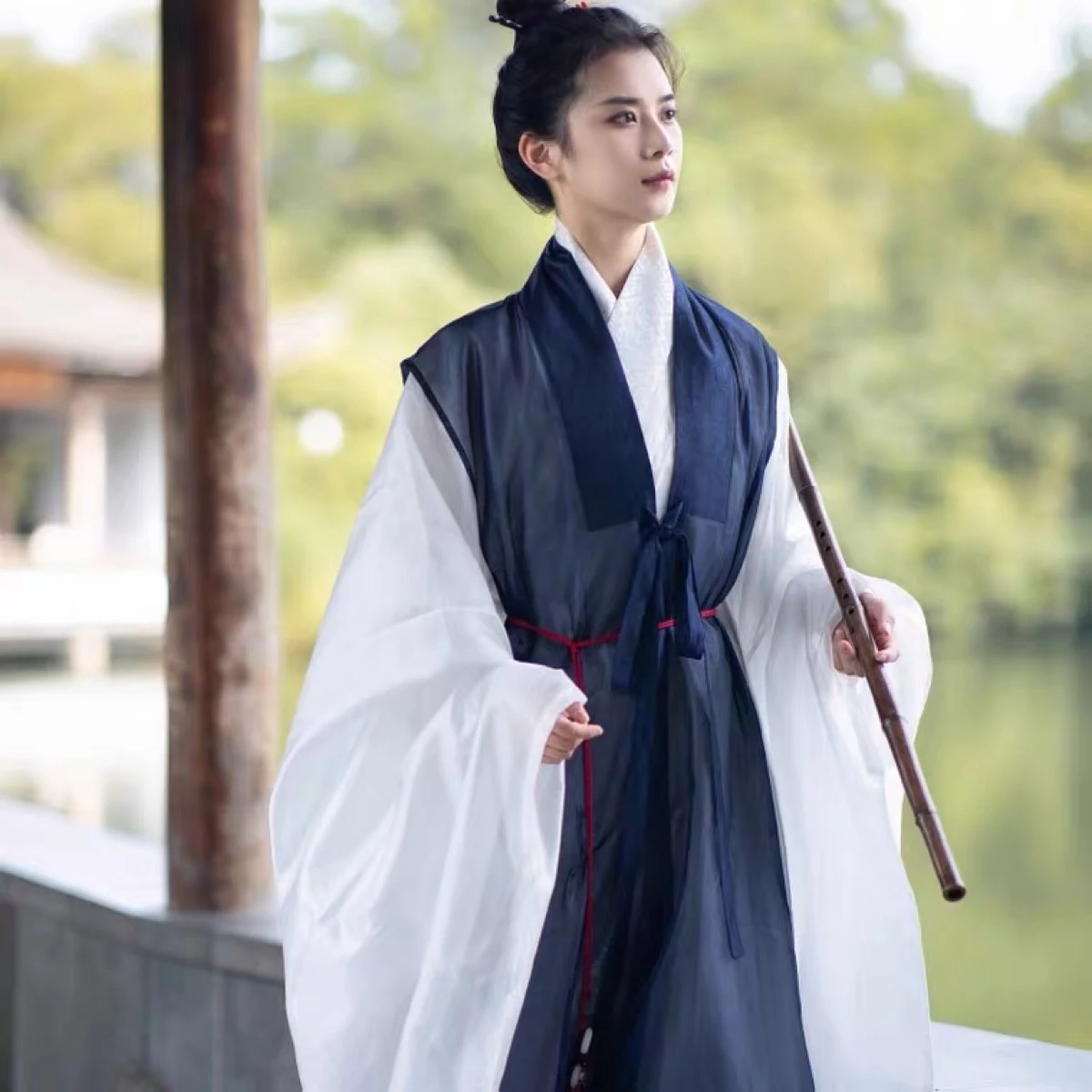

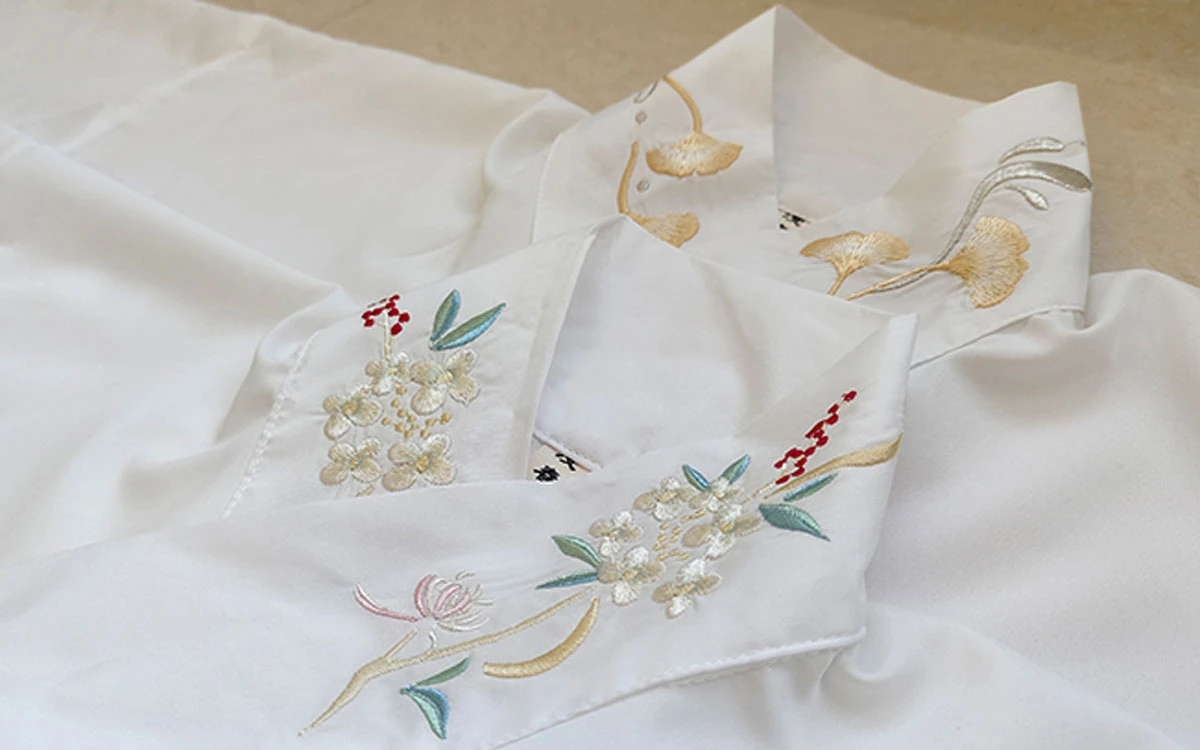
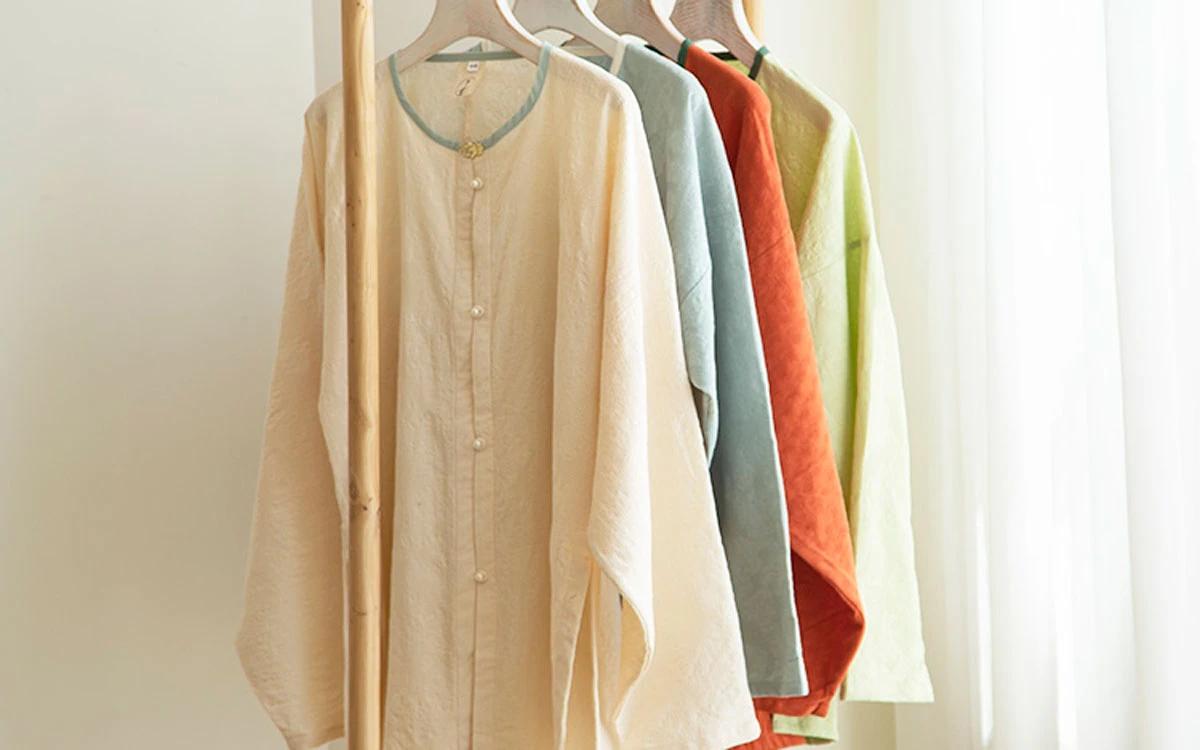
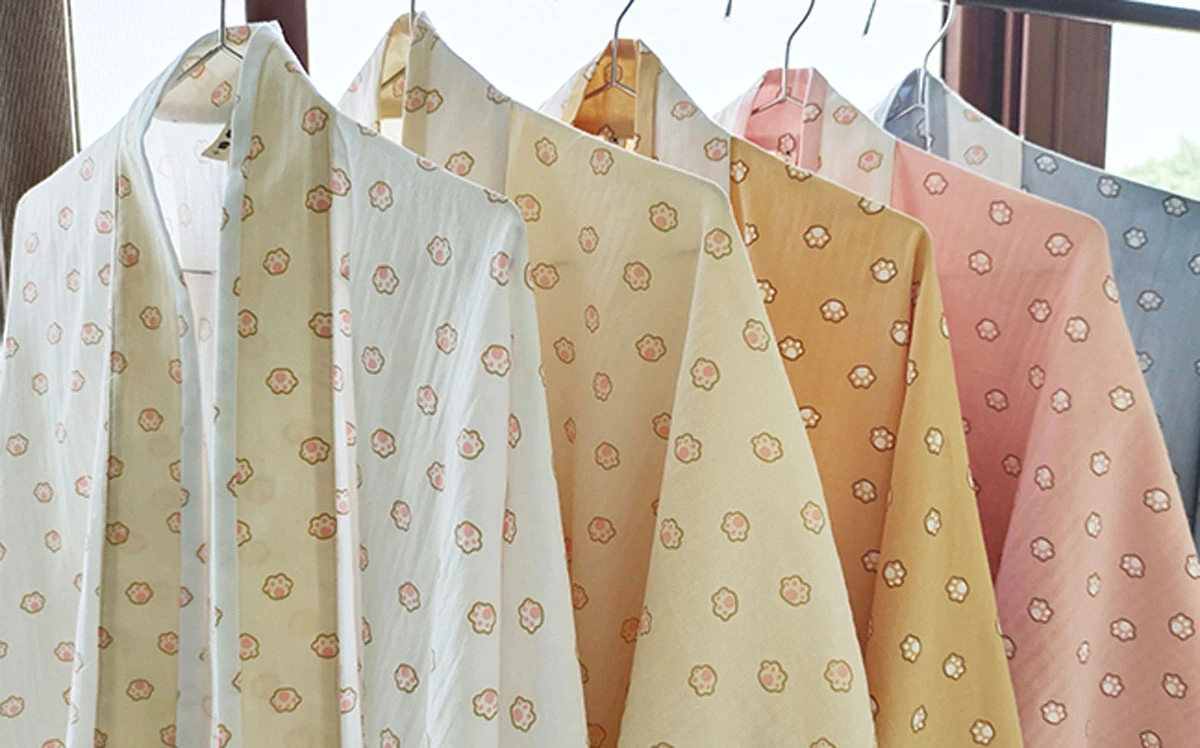
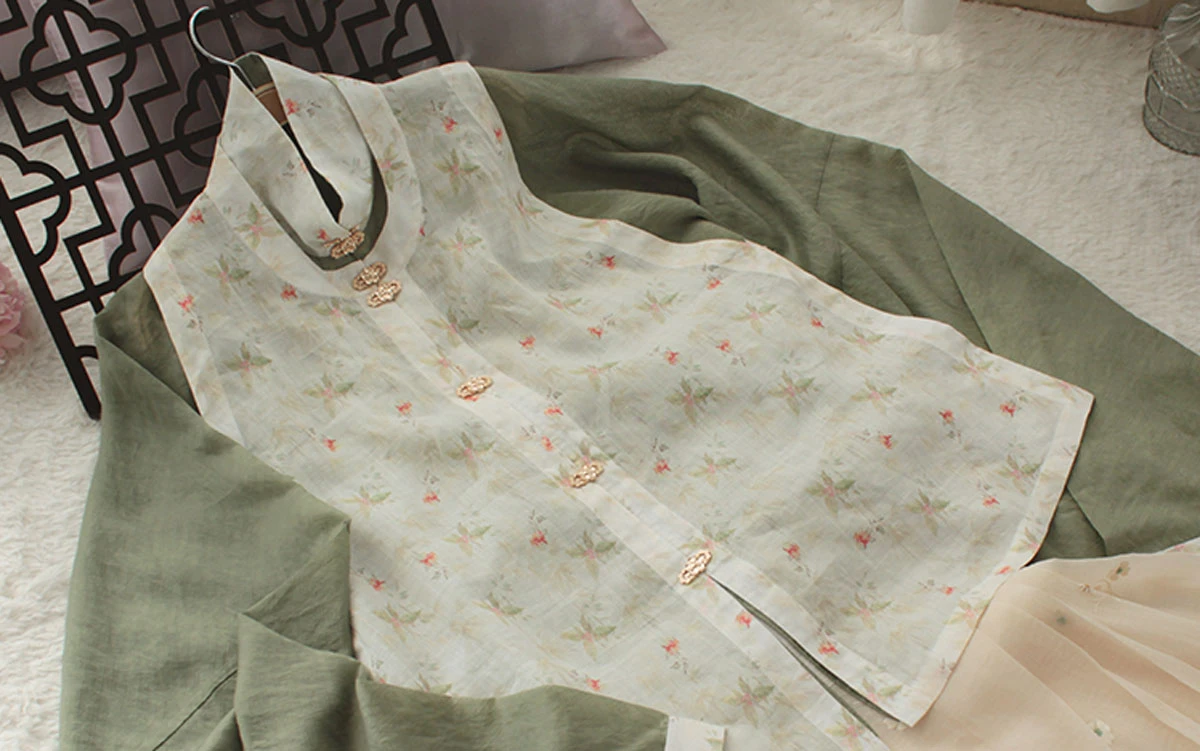
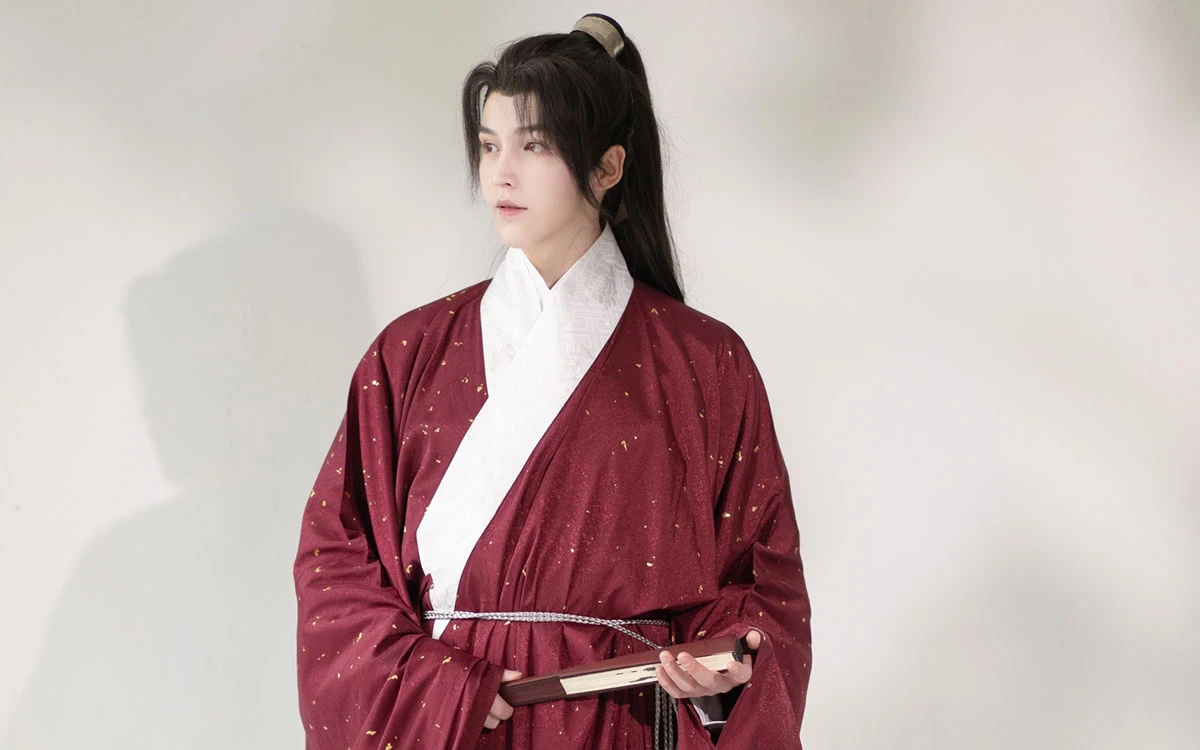

I think my favourite would be the wide sleeves, but I don't have many places to wear such sleeves to 🙁
Translating the individual components of 工袋袖 (gongdai xiu) you get work bag sleeve. So, maybe they're pockets by another name? 😎 I have the vaguest of memories of period movies with people storing things in their sleeves, like straight sleeves but the opening is partially closed... unless that's kimono sleeves? (It is said that kimono and hanbok are just hanfu from a particular dynasty, tho?)
aaah so many styles!! making me wanna try all of these on... if only there were brick-and-mortar hanfu shops where I live!
Come on! Isn't "no sleeve" as a sleeve category just cheating? ^^ Joke aside, I heard about a kind of sleeve called 箭袖 jian4 xiu4, arrow sleeves. Is it just another name for the narrow sleeves?
I like airplane sleeves, very fashion
Sorry I- need a bit more info on 工袋袖 (gongdai xiu), my flimsy brain cannot picture what the difference is 🥲 So, gongdai sleeves are just more deflated 琵琶袖 (pipa xiu)?
Basically yeah! Think of like… a zhixiu, but the bottom part is kinda curved.
Sangat unik, meski zaman dulu tapi tidak norak.
Sangat bervariasi gaya lengan nya, itu bagus
Woah! I dodnt know that the had THAT many types of sleeves!